
Red Széll has become the first blind person to climb Scotland's "Big Three" sea stacks, also known as the "three Tom Patey stacks", including the Old Man of Hoy, the Old Man of Stoer and, most recently, Am Buachaille.
For Red, 49, of London, the dream started in the early eighties when he watched in awe a BBC documentary about the first ascent in 1966 of the 137m tall Orcadian stack by Patey and Chris Bonington.
At the age of 13, Red (short for Redmond) had no reason to disbelieve his aspirations to one day follow suit – and he set about learning some of the required skills by joining a school cadet force. "I knew the cadets did a summer climbing trip each year so it seemed like an obvious place to start," explains Red, who was brought up in Sussex.
He could have no idea that just six years later he would receive the devastating news that he was going blind.
Two decades of freefall
The week before his 20th birthday and amid the buzz of being an English undergraduate at the University of Cambridge, Red learned he had a degenerative condition called retinitis pigmentosa. He was told he would be blind within a decade.
"I went into freefall from then and I didn't really stop until about 10 years ago," admits Red. "There was so much about my life that involved sport and the challenge of pushing my limits. I had become a reasonable climber by then and I had started leading HVS routes. I was also part of the university's legendary Night Climbers, scaling tall buildings after dark.
"But one by one I had to stop what I enjoyed doing because I couldn't see. I gave up riding my bike – and the freedom that had given me – then climbing, cricket, rugby and cross country running. I genuinely felt I could only deal with the diagnosis by myself and I pushed people away. Next came many years of self-destruction when I drank too much among other things."
By the age of 36, Red had just five per cent vision and today this has reduced to two per cent. He says: "My field of vision closed in around me, similar to being blinkered, and I can see only a small hole of light and shadow now. It is like looking through a keyhole into a smoke-filled room."
Friends, family and a chance party
Despite trying to "shut out almost everyone" through his most difficult years, in a bid for what he believed was self preservation, Red recognises that he was fortunate to have some very supportive friends. He also met his wife, Kate, in 1994.
Their two daughters, Laura now 19, and 16-year-old Meg, arrived in the early noughties. Red, a writer and broadcaster, became a househusband.
"I was lucky that friends already knew and liked me and they could understand some of my behaviour," he says. "But things were not easy. I had looked to my love of adventure as a way to 'Feed the Rat' (ref: Feeding the Rat: A Climber's Life on the Edge by Al Alvarez). I always had a gnawing compulsion to push myself to my limits and explore every corner of a cave. But then because of my vision it had been taken away, just like that, or so I thought."
Red is clearly immensely proud of his two daughters – and will also be eternally grateful to Laura for her unprompted decision to host her ninth birthday party at a local climbing centre.
Red says: "I don't know where the idea came from but I found myself at a climbing wall party. While the other parents seemed content to stand back and watch their children climb, I was immediately drawn to the wall. I started groping at the holds. I thought: 'I want to do this again. This is where I want to be.' When I asked the instructor, Trevor, if it might be possible. He said, 'Yes. Why not? I think it can work if we climb together.' And that was it."
Red's rediscovery of his first sporting love led to many hours of joy at the indoor wall. "To climb again was similar to riding a bike," he says. "It felt so natural and the skills came back very quickly. It gave me such incredible pleasure to feel like I was reversing the tide of my worsening physical ability because of my limited vision."
Yet still Red did not believe he would ever climb outside again. "I felt that if I could not trust myself to climb on rock then how could I expect others to trust me. I didn't believe I would manage anything more than the indoor walls again," he says.
Then Red happened to mention his childhood dream of the Old Man of Hoy to Trevor. He was taken by surprise by his instructor's response.
"Trevor told me that he thought that with a bit of work it might be possible for me to climb the sea stack one day. It felt suddenly like I was floating on air," Red says.
"It was the complete and utter opposite feeling of what happens when I walk into a room. When that happens, someone always shows me to a chair. Being told that I might be able to climb outdoors was like telling me to go ahead an climb all over the furniture without anyone helping me."
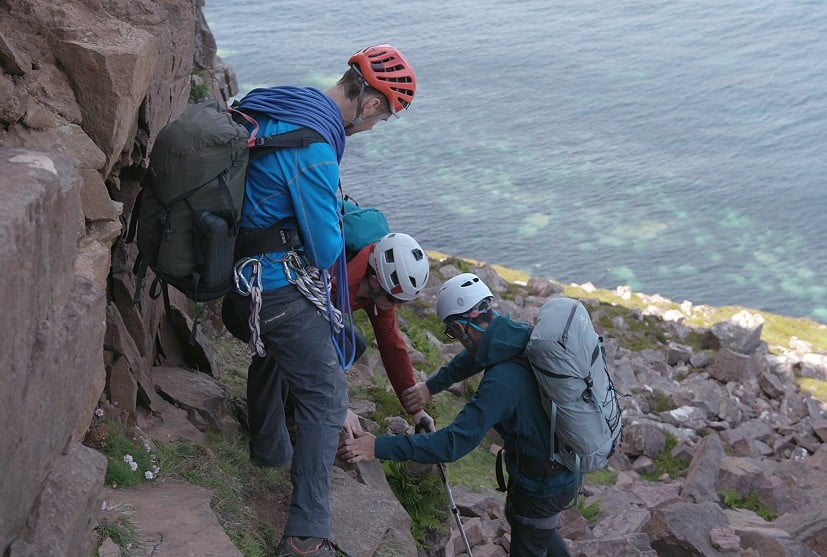
The first blind person to climb the Old Man of Hoy
The "bit of work" turned out to "a huge amount of hard work" but in 2013 Red was preparing to climb his dream. In the meantime, he had also had a chance meeting with another househusband, Matthew Wootliff. The dads have two daughters the same age.
"We met at the school gates," says Red, laughing. "There weren't many other househusbands, I guess. We formed a friendship that has been amazing in so many ways. Matthew is the sort of person who believes all kinds of things are possible and even that climbing one of the UK's highest sea stacks or riding a tandem bike with a blind person is completely feasible."
The Old Man of Hoy rises 137m out of the crashing Atlantic, just off the Island of Hoy. The story of Red's successful climb in June 2013 is told in his book, The Blind Man of Hoy. He was supported in his ascent by mountain guides Nick Carter, from Inverness, and Martin Moran, who died earlier this year on Nanda Devi in the Indian Himalaya. Other team members included Matthew and another friend Andres Cervantes. Award-winning adventure cameraman Keith Partridge filmed the record-breaking climb.
"To climb the Old Man was a dream come true; exactly that," Red says. "I thought as I stood on the top, 'Oh my god, I have actually done this. I don't believe I would have done the climb if I was not blind. If I had been able to see I am sure I would be doing a boring desk job, getting older and growing more unfit. It is being blind that gave me the opportunity to climb the Orcadian cathedral of rock."
"You know, also, because I am blind I was not aware of the exposure on that climb that other people talk about. There has to be a positive to being blind, doesn't there?"
The Old Man of Stoer came next in 2014 with the same team assisting Red to climb the 60m tall sea stack near Lochinver, in Sutherland. After that, the blind athlete's focus turned to the final stack of the "Big Three".
The triumph of Am Buachaille
In 2015, Red travelled with his crew to make an attempt of Am Buachaille at the southern tip of remote Sandwood Bay, also in Sutherland. Scottish mountaineer Hamish MacInnes describes the climb of the spearhead of Torridonian sandstone, which rises 65m (213 feet) vertically from the ocean, as "the most serious of the big three.''
The original route, established in 1968 by Patey two years before his death, along with John Cleare and Ian Clough, is graded HVS with a 5b crux. It receives a 1-star rating. There are another four routes, ranging from a 3-star VS 4C to an E2 5b.
Reaching the sea stack requires a hike of around 10km over rocky terrain, followed by a scramble of some 60m down a cliff face, the crossing of a 500m stretch of seaweed strewn boulders to a platform from where climbers can swim a sea channel of up to 30m. In addition, a favourable tide "window" needs to be taken into account when planning an ascent of Am Buachaille.
That time, Red did not make the climb. The wind and waves were too extreme to get to the base of the sea stack. "Honestly, it was almost a relief," he says. "After hiking blind across 10km of broken, boggy ground I was mentally and physically exhausted. Getting to the climb can be the hardest for me because of my lack of vision. I needed to find a smarter way to reach the stack."
The new plan of action included a mountain bike tandem – and a welcome prize fund. "With Matthew as my pilot on the bike it was possible to do the journey to Sandwood Bay in around 45 minutes and that made the adventure much more possible," Red says.
"I was also awarded the Holman Prize and that made it financially feasible." The Holman Prize is named after the British explorer James Holman, known as The Blind Traveller, who despite his disability became the world's most widely travelled man before the invention of the internal combustion engine.
Launched in 2017 by the San Francisco LightHouse For The Blind charity, the prize funds three individuals to "explore the world and push their limits…to savour the richness of a world that is so often thought of as inaccessible to the blind."
On June 22, a suddenly favourable spell of weather and tide saw a second and successful attempt of Am Buachaille. To achieve his goal, Red reassembled the team that had backed his 2013 climb of the Old Man of Hoy, except, sadly, Martin Moran.
Red dedicated his climb to the British mountaineer. "In guiding me up both Hoy and The Old Man of Stoer, Martin helped me achieve heights I had only ever dreamed of," he says.
In total the final sea stack adventure took 12 hours. "The bike ride gave us some hard knocks and we fell off twice, but it was definitely the right decision to bring the tandem," he says. "The hardest parts were still those I had to do on foot, particularly the scramble down the cliff, which was treacherous. I love swimming so I enjoyed that part and then the climb itself was amazing even if I was constantly aware that we were racing the incoming tide."
Nick led the climb with Red seconding. Matthew shouted guidance to his friend with directions on where to find hand and foot holds. "We have worked out our own climbing system and we use a pretend clock face and distance," Red explains, "so Matthew might shout one o'clock and eight inches. This means I need to feel up to my right and about eight inches away. We are used to it and it works well.
"When I am climbing I forget I am blind. I am immersed in the moment and focused on the rock that I am feeling. I concentrate on my balance and sense of place. It's very liberating and very healthy for me because I flush out all thoughts about blindness from my head."
It was after the crux move some 15m below the top of the stack that Red allowed himself to believe he was going to complete the climb. "The final section has a gentler angle and I started to feel a little surge of excitement. If I could have made that moment last longer by climbing higher I think I would have done," he says. "Standing on the top I felt a rush of exhilaration, very similar to when I climbed the Old Man. I felt so thrilled."
But the team still needed to retrace the route. In total, the adventure took 12 hours, including 4.5 hours of climbing. After reaching the top, the team supported Red to abseil back to sea level.
"The abseil is very hard if you are blind," he says. "There are ledges and flakes of rock sticking out that are too easy to bump against. I was also aware of the loose rocks that I could too easily dislodge. I didn't want to hurt someone below by knocking off a rock. It's a very stressful part of a climb for me."
It was after midnight when the team finally returned to their accommodation at the SMC Naismith's Hut at Elphin.
"Climbing Am Buachaille was the most exhausting day of my life but also the most exhilarating,' Red says. "I am so grateful to all those who have helped and supported me. I also want to show other people that being blind should not be a barrier to activity. I want them to explore and to feel the high of achieving something physical, whether it's climbing or salsa dancing.
"For example, I am delighted to see that Jesse Dufton has recently become the first blind person to lead a climb of the Old Man of Hoy (UKC article). I haven't placed any protection for many years because I can't trust my own judgement but to see that Jesse has not let his blindness hinder his climbing is amazing.
"Climbing has positively changed my life. I am happy that instead of focusing on what I can't do because I am blind I now look at all I can do."

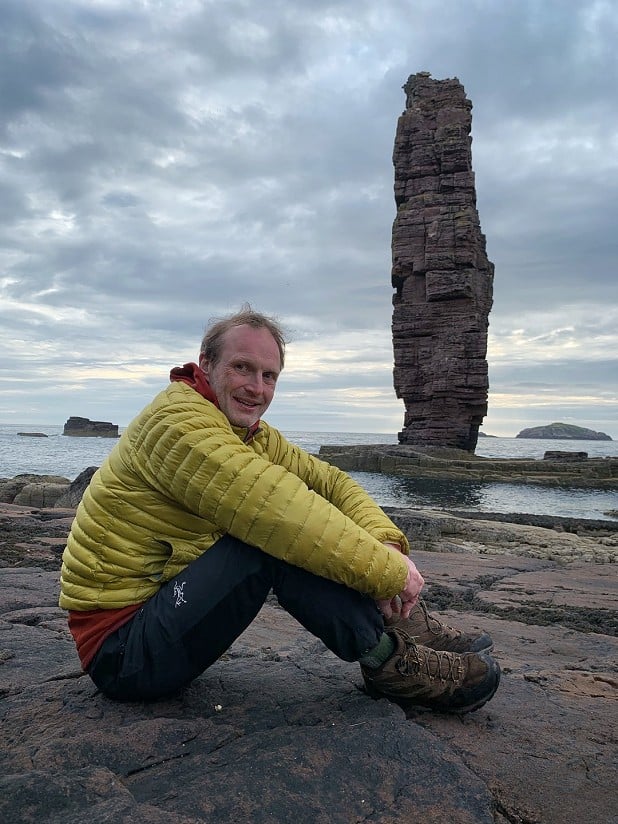
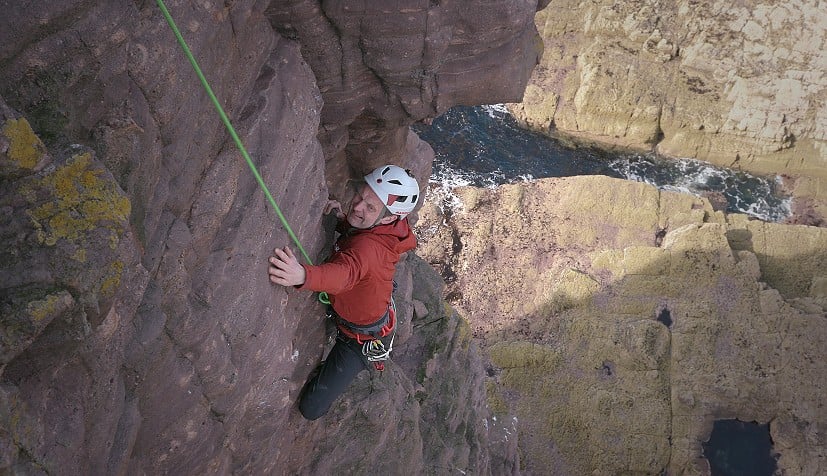
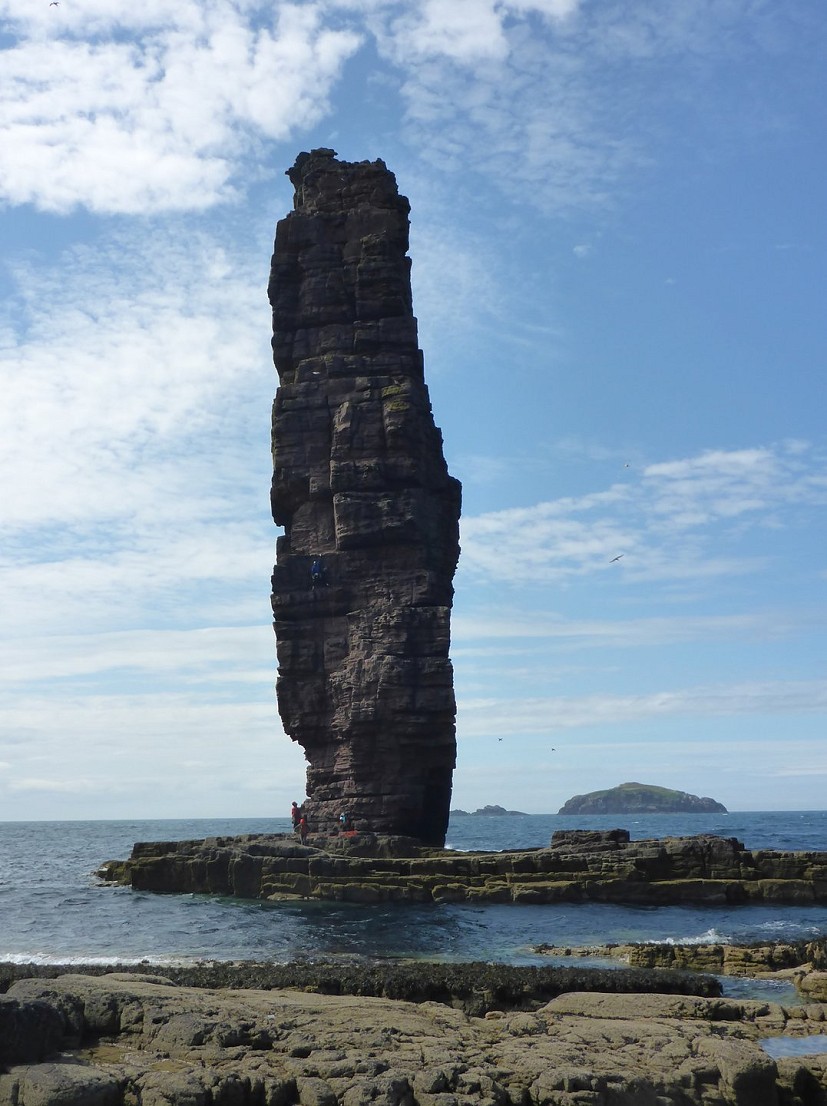
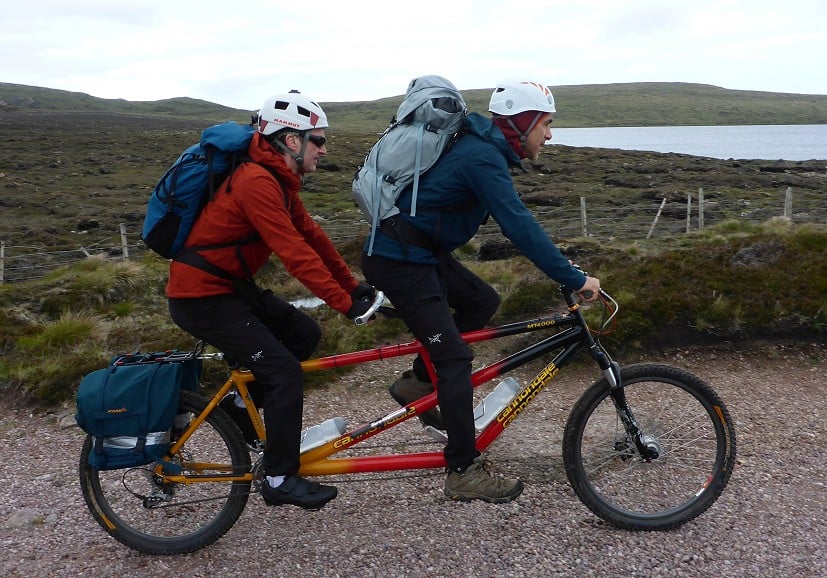


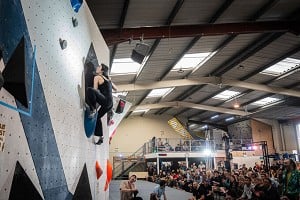
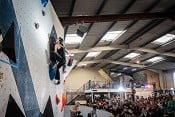



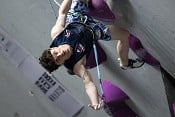
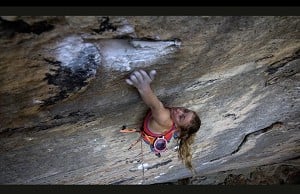
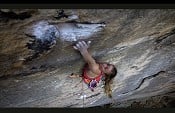
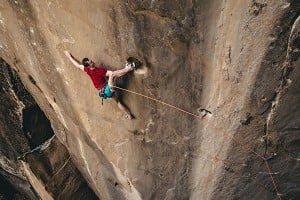
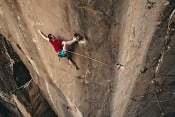
Comments
Congratulations Red and to the rest of the team. I was part of the other team on am Buachaille last weekend and abseiled past just as you was getting ready for the crux move. Inspirational to witness, but especially the walk down the slippery and loose slope!!
A splendid read! Great article and huge congratulations to Red.
What a terrific story. Many congratulations and all the best for your future adventures.
Dave
Can't get on these stacks for blind guys! Wicked stuff.
Red was on Radio 4 this morning (along with Tony Blackburn).
https://www.bbc.co.uk/programmes/m0006dgl#play